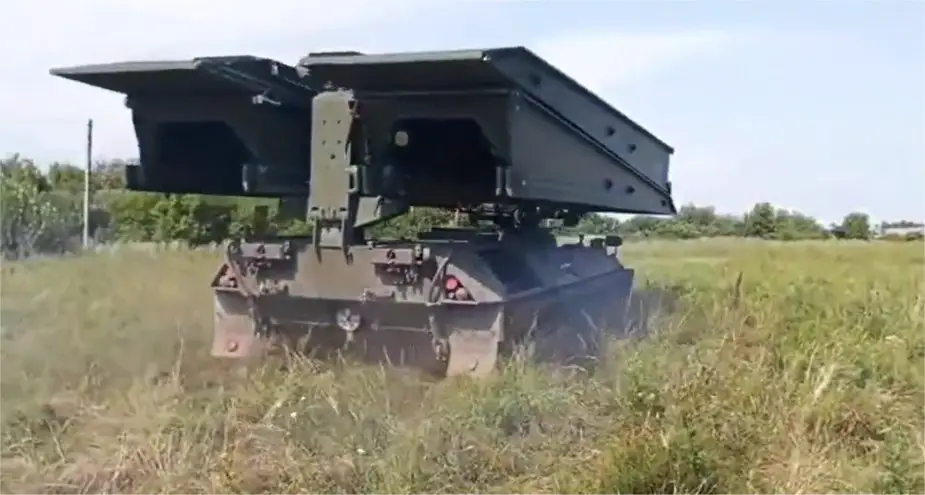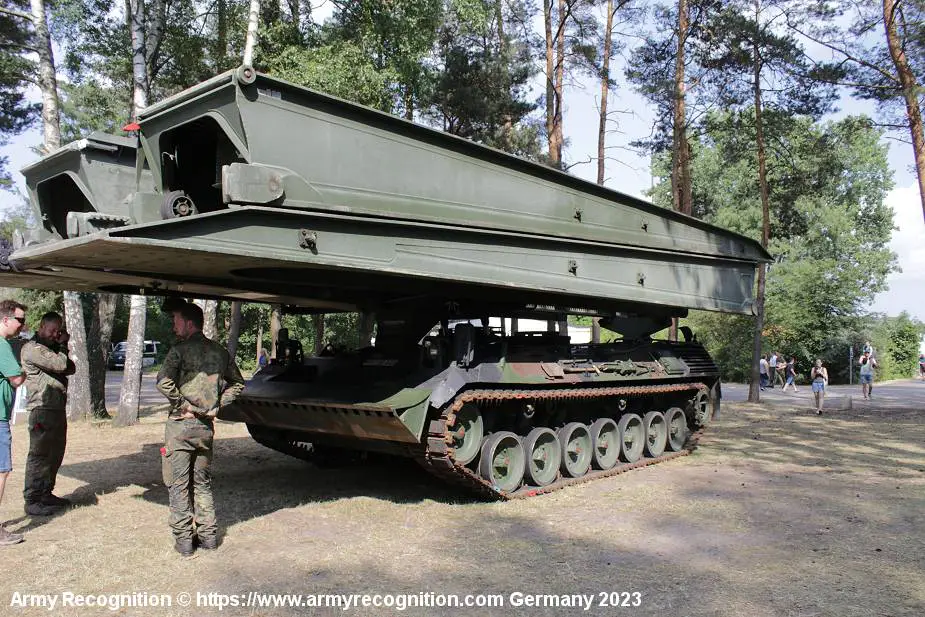Breaking news
German Biber armored bridge vehicles enhance Ukrainian capacities.
According to a tweet posted by OSINTtechnical on June 15, 2023, the German-supplied Biber armored vehicle launched bridge (AVLB), also known as the Beaver, has been observed in use by the Ukrainian military. Germany has delivered ten armored bridge-laying vehicles so far, with an additional 16 in preparation. They have also provided five bridges specifically designed for the Biber.
Follow Army Recognition on Google News at this link

A Biber armored vehicle launched bridge (AVLB) in Ukrainian service (Picture source OSINTtechnical)
The Biber, also known as the Panzerschnellbrücke Biber or Beaver in English, is an armored vehicle launched bridge (AVLB) developed by Rheinmetall Land Systems GmbH in Germany. It is designed to provide combat support by overcoming various obstacles encountered on the battlefield. The Biber serves as an armored express bridge layer, succeeding the M48 armored bridge laying vehicle and being succeeded by the Leguan 2.
Built upon the Leopard 1 tank chassis, the Biber employs a horizontal laying technique that enables efficient maneuverability across diverse terrains. With its armor protection of up to 70mm, this 45.3-ton vehicle can swiftly deploy a 22-meter-long and 4-meter-wide bridge in just 2 minutes while remaining shielded. The bridge's maximum span is 20 meters, enabling the vehicle to traverse obstacles such as anti-tank ditches and trenches.
Powered by an 830 horsepower (610 kW) engine, the Biber utilizes a torsion bar suspension system derived from the Leopard 1 chassis and can achieve speeds of up to 62 km/h on roads. The crew consists of a commander and a driver. While the bridge layer itself lacks armaments, it is equipped with a smoke grenade launcher.
For rail transportation, the bridge needs to be divided into two halves lengthwise. On the other hand, a specialized 3-axle flatbed trailer weighing 15 tons is employed for road transport, allowing the bridge to be conveyed either in halves or disassembled into quarters.
During the bridge-laying process, the bridge assumes a horizontal position using a free cantilever arrangement, differing from the scissor method employed by other bridge layers. In the transport position, the two symmetrical bridge halves lie horizontally atop each other on the vehicle's main and rear booms.
When it is time to deploy the bridge, the two elements are lifted, and the lower half is pushed forward. Once connected, the entire fixed bridge is lowered over the obstacle using the main boom. The retrieval process follows the reverse order, and throughout the laying process, the load is supported by the plate attached to the bow, ensuring the crew's protection.
Due to limitations imposed by the Leopard 2 chassis, the Panzer Schnellbrücke (PSB) reached its maximum potential, and the PSB 2 project, intended as its successor, faced issues and has been discontinued. Consequently, the Bundeswehr has been conducting tests on the Leguan bridge system mounted on a Leopard 2 chassis since 2009.
The delivery of a significant number of Biber vehicles by Germany to support Ukraine in the aftermath of the 2022 Russian invasion has been instrumental. With ten armored bridge-laying vehicles already received by mid-July 2023 and an additional 16 in preparation for delivery, Ukraine's mobility and operational flexibility will be greatly enhanced, particularly in navigating challenging terrains that include anti-tank ditches and trenches.

A German Biber armored vehicle launched bridge (AVLB) (Picture source Army Recognition)

























